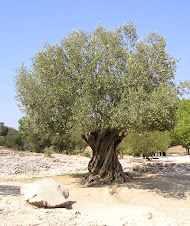


We spent today in many parts of Jerusalem. The sheer conglomeration of the city can be too much. History stacks on top of history. The shopping, both among tourists and locals: Christians buying incense. The owner of the coffee shop yelling at his teenage sons upstairs. The women trying on bras over their clothes. The smells, the bells, the prayers in Hebrew, Arabic, Russian, Armenian, and even English. No matter who has sacked the city in the past, the city comes back.
We were walking down an alleyway in the Armenian Quarter after visiting the Wailing Wall, and looking up there was a tree growing out of the side of a building. Life, anew, growing out of the barren sandstone of a building hundreds of years old.
In the streets it was organized chaos. Pilgrims, worshippers, tourists, all walking around, and there we were in the holiest place for multiple religions. People bumping into you as you walk, slippery stones, and yet it was pleasurable and inspiring at the same time. Quite a dichotomy, yet wonderful.
Some of us connected with the holy sites, and others did not. It is hard to fully connect to other people’s faith tradition. For one person, little connection - it was one thing to pray at the Wailing Wall knowing that some of those around you are praying for the destruction of the Dome of the Rock so the Temple can be rebuilt. For another, gratitude in praying - remembering past prayers made there, for a mother who was independent and in good health at the time. For still another, holy site envy – envy for the historicity, impressiveness, and attention given to the sites of others – until he walked into the Church of the Holy Sepulcher for the first time. Then awe. The beauty of the architecture and iconography, the mix and match of the buildings added on over the centuries, and the aromatic prayers breathed in and out of pilgrim’s lungs. We missed the Dome of the Rock, since it was closed because of concern of settler violence.
No matter where one is at the time, going to Jerusalem is an awesome experience. Whether one connects with the layers of history, the shopping, the holy sites, or just people watching, it can take one back to the sacred in a way not experienced in other places.












































